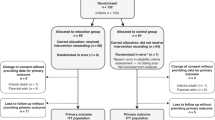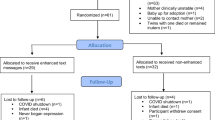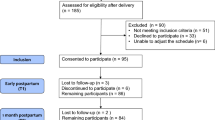Abstract
Objective
Pumping studies in mothers of preterm infants are limited by self-reported pumping behaviors and non-objective measures of pumped milk volume and secretory activation (SA).
Methods
Non-randomized observational study of first 14 days postpartum in 29 mothers of preterm infants. Smart pumps measured and stored pumping behaviors and pumped milk volume. Selective ion electrodes measured sodium and sodium:potassium ratio to determine SA. Generalized estimating equations, cluster analyses and multivariate regression were used.
Results
SA was delayed (median 5.8 days) and impermanent. Each additional daily pumping increased odds of SA within 2 days by 48% (p = 0.01). High-intensity pumping mothers (N = 17) had greater daily and cumulative pumped milk volume than low-intensity pumping mothers (N = 12). Pumping variables showed daily changes in the first week, then plateaued.
Conclusion
The first week postpartum is critical for optimizing pumping behaviors. Accurate, objective measures of pumping behaviors, pumped milk volume and SA are a research priority.
This is a preview of subscription content, access via your institution
Access options
Subscribe to this journal
Receive 12 print issues and online access
$259.00 per year
only $21.58 per issue
Buy this article
- Purchase on SpringerLink
- Instant access to full article PDF
Prices may be subject to local taxes which are calculated during checkout





Similar content being viewed by others
Data availability
The datasets generated during and/or analyzed during the current study are available from the corresponding author on reasonable request.
Change history
23 July 2024
A Correction to this paper has been published: https://doi.org/10.1038/s41372-024-02038-7
References
Meier PP, Johnson TJ, Patel AL, Rossman B. Evidence-based methods that promote human milk feeding of preterm infants: An expert review. Clin Perinatol. 2017;44:1.
Patel AL, Johnson TJ, Meier PP. Racial and socioeconomic disparities in breast milk feedings in US neonatal intensive care units. Pediatr Res. 2020;89:344–52.
Meier PP. More evidence: Mothers’ own milk is personalized medicine for very low birthweight infants. Cell Rep Med. 2022;3:100710.
Hoban R, Patel AL, Medina Poeliniz C, Tat Lai C, Judy JE, Geddes D, et al. Human milk biomarkers of secretory activation in breast pump-dependent mothers of premature infants. Breastfeed Med. 2018;13:352–60.
Hoban R, Bigger H, Schoeny M, Engstrom J, Meier P, Patel AL. Milk volume at 2 weeks predicts mother’s own milk feeding at neonatal intensive care unit discharge for very low birthweight infants. Breastfeed Med. 2018;13:135–41.
Hoban R, Medina Poeliniz C, Somerset E, Tat Lai C, Janes JE, Patel AL, et al. Mother’s own milk biomarkers predict coming to volume in pump-dependent mothers of preterm infants. J Pediatrics. 2021;228:44–52.e3.
Medina Poeliniz C, Hoban R, Schoeny EM, Engstrom LJ, Patel LA, Meier PP, et al. is associated with time-dependent changes in secretory activation measures during the first 7 days postpartum in breast pump-dependent mothers of premature infants. Breastfeed Med. 2021;17:173–81.
Meier PP, Patel AL, Hoban R, Engstrom JL. Which breast pump for which mother: An evidence-based approach to individualizing breast pump technology. J Perinatol. 2016;36:493–9.
Krebs FN, Belfort BM, Meier PP, Mennella JA, O’Connor DL, Taylor SN, et al. Infant factors that impact the ecology of human milk secretion and composition—a report from “Breastmilk ecology: Genesis of infant nutrition (BEGIN)” working group 3. Am J Clin Nutr. 2023;117:S43–S60. https://doi.org/10.1016/j.ajcnut.2023.01.021.
Meier PP, Patel AL, Bigger HR, Rossman B, Engstrom JL. Supporting breastfeeding in the neonatal intensive care unit: Rush Mother’s Milk Club as a case study of evidence-based care. Pediatr Clin North Am. 2013;60:209–26.
Meier PP, Engstrom JL, Rossman B. Breastfeeding peer counselors as direct lactation care providers in the neonatal intensive care unit. J Hum Lactation. 2013;29:313–22.
Panagos PG, Garza M, Glaviano K, et al. Baby or pump: A quality improvement (QI) project to decrease time to pumping initiation in mothers of VLBW infants. Abstract from the 19th International Society for Research in Human Milk and Lactation Conference. Breastfeed Med. 2018;13:A-1–A-68.
Yuan S, Li Q, Wang H, Xu X. The utilization of sodium concentration in human milk from pump-dependent mothers of preterm infants as a measure of milk production. Breastfeed Med. 2023;18:506–13.
Esquerra-Zwiers A, Vroom A, Geddes D, Lai CT. Use of a portable point-of-care Instrumentation to measure human milk sodium and potassium concentrations. Breastfeed Med. 2022;17:46–51.
Tat Lai C, Gardner H, Geddes D. Comparison of inductively coupled plasma optical emission spectrometry with an ion selective electrode to determine sodium and potassium levels in human milk. Nutrients. 2018;10:1218.
Medina Poeliniz C, Engstrom JL, Hoban R, Patel AL, Meier PP. Measures of secretory activation for research and practice: An integrative review. Breastfeed Med. 2020;15:191–212.
Parker LA, Hoban R, Bendixen MM, et al. Milk biomarkers of secretory activation in breast pump-dependent mothers of preterm infants: An integrative review. Breastfeed Med. 2024;19:3–16.
R Core Team. R: A language and environment for statistical computing. R foundation for statistical computing. R Core Team: Vienna, Austria 2021.
Liang-Yee K, Zeger SL. Longitudinal data analysis using generalized linear models. Biometrika 1986;73:13–22.
Caliński T, Harabasz J. A dendrite method for cluster analysis. Commun Stat. 1974;3:1–27.
Jegier BJ, Johnson TJ, Engstrom JL, Patel AL, Loera F, Meier PP. The institutional cost of acquiring 100 mL of human milk for very low birth weight infants in the neonatal intensive care unit. J Hum Lactation. 2013;29:390–9.
Santoro W, Martinez FE, Ricco GR, Jorge SM. Colostrum ingested during the first day of life by exclusively breastfed healthy newborn infants. J Pediatrics. 2010;156:29–32.
Neville MC, Keller R, Seacat J, Lutes V, Neifert M, Casey C, et al. Studies in human lactation: Milk volumes in lactating women during the onset of lactation and full lactation. Am J Clin Nutr. 1988;48:1375–86.
Casey CE, Neifert MR, Seacat JM, Neville MC. Nutrient intake by breast-fed infants during the first five days after birth. Am J Dis Child. 1986;140:933–6.
Saint L, Smith M, Hartmann PE. The yield and nutrient content of colostrum and milk of women from giving birth to 1-month post-partum. Br J Nutr. 1984;52:87–95.
Meier PP, Engstrom JL, Janes JE, Jegier BJ, Loera F. Breast pump suction patterns that mimic the human infant during breastfeeding: Greater milk output in less time spent pumping for breast pump-dependent mothers with premature infants. J Perinatol. 2012;32:103–10.
Mago-Shah DD, Athavale K, Fisher K, et al. Early pumping frequency and coming to volume For mother’s own milk feeding in hospitalized infants. J Perinatol. 2023;43:629–34.
Meier PP, Engstrom JL, Hurst NM, Ackerman B, Allen M, Motykowski JE, et al. A comparison of the efficiency, efficacy, comfort, and convenience of two hospital-grade electric breast pumps for mothers of very low birthweight infants. Breastfeed Med. 2008;3:141–50.
Parker LA, Sullivan S, Cacho N, Engelmann C, Krueger C, Mueller M. Indicators of secretory activation in mothers of preterm very low birth weight infants. J Hum Lactation. 2021;37:581–92.
Bendixen MM, Weaver MT, Parker LA. Milk volume outcomes in pump-dependent mothers of critically ill infants. Adv Neonatal Care. 2022;22:253–60.
Meier PP. PROVIDE: A training compendium on providing mothers’ own milk in NICU settings the global health network: LactaHub. Accessed September 5, 2023. https://Lactahub.org/nicu-training.
Nommsen-Rivers LA, Wagner EA, Roznowski DM, Riddle SW, Ward LP, Thompson A. Measures of maternal metabolic health as predictors of severely low milk production. Breastfeed Med. 2022;17:566–76.
Lee S, Kelleher SL. Biological underpinnings of breastfeeding challenges: The role of genetics, diet, and environment on lactation physiology. Am J Physiol. 2016;311:E405–E422.
Ingram JC, Woolridge MW, Greenwood RJ, et al. Maternal predictors of early breast milk output. Acta Paediatrica. 1999;88:493–9.
Chen DC, Nommsen-Rivers LA, Dewey KG, Lonnerdal B. Stress during labor and delivery and early lactation performance. Am J Clin Nutr. 1998;68:335.
Funding
Study was partially funded by Medela, AG.
Author information
Authors and Affiliations
Contributions
Conceptualization/design: RH, CMP, PPM. Supervision: PPM, Data Curation: MS, JJ, CMP, CSF. Writing of original draft: RH, CMP, PPM. Writing, reviewing, and editing: RH, CMP, JJ, MS, CSF, PPM. All authors have read and agreed to the published version of the article.
Corresponding author
Ethics declarations
Competing interests
Potential conflict of interest: PPM serves as a consultant to Medela for educational activities. RH holds a position on Medela’s scientific advisory board.
Ethics approval
Rush University Medical Center IRB review. All methods were performed in accordance with the relevant guidelines and regulations.
Consent for publication
All collaborators listed as coauthors have consented to this publication.
Additional information
Publisher’s note Springer Nature remains neutral with regard to jurisdictional claims in published maps and institutional affiliations.
The original online version of this article was revised: Page 3, the second paragraph (under Table 1): Na ::16 has been changed to Na <16. Page 5, second line of second column: was higher has been changed to were higher. Reference 18: Austria has been inserted behind Vienna. Funding information was added.
Supplementary information
Rights and permissions
Springer Nature or its licensor (e.g. a society or other partner) holds exclusive rights to this article under a publishing agreement with the author(s) or other rightsholder(s); author self-archiving of the accepted manuscript version of this article is solely governed by the terms of such publishing agreement and applicable law.
About this article
Cite this article
Hoban, R., Medina-Poeliniz, C., Signorile, M. et al. Early postpartum pumping behaviors, pumped milk volume, and achievement of secretory activation in breast pump-dependent mothers of preterm infants. J Perinatol 44, 1597–1606 (2024). https://doi.org/10.1038/s41372-024-02021-2
Received:
Revised:
Accepted:
Published:
Issue date:
DOI: https://doi.org/10.1038/s41372-024-02021-2



